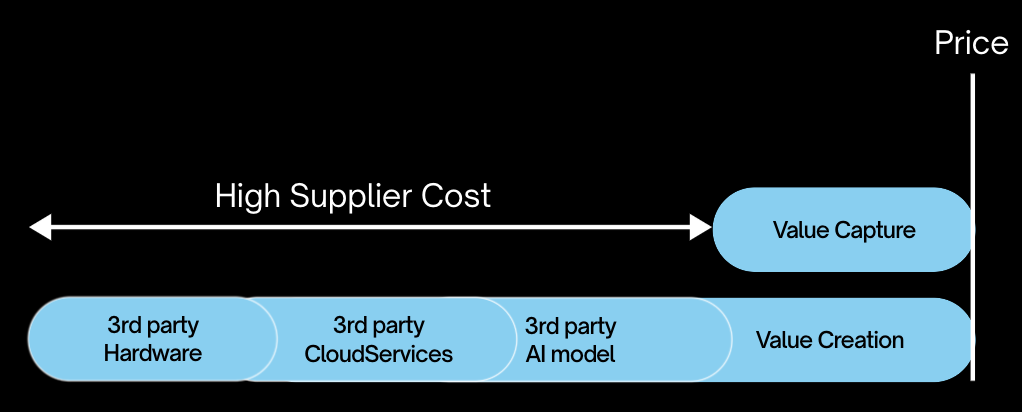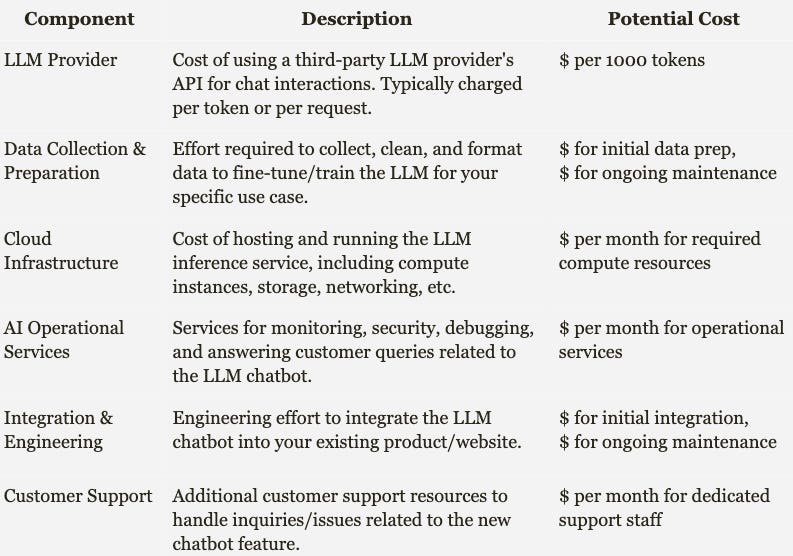What AI products can learn from Amdahl's Law
As companies eagerly incorporate AI into their offerings, they face a common hurdle: the escalating costs of third-party AI models, cloud infrastructure, and specialized hardware. This financial strain hits startups hardest, where rapid cash depletion can swiftly upend even the most promising ventures. With the stakes of AI integration high and the risk of diminishing returns, it's imperative to scrutinize the value of AI investments from the outset.
Navigating the AI Integration Challenge
How do we navigate this challenge? The goal is to craft a system that not only maximizes value creation but also includes robust measures to evaluate the benefits of embedding AI capabilities. Let's first demystify some core concepts: value creation and capture, and the strategic path to maximizing these elements in the context of AI.
Value Creation & Capture
Value creation in the AI domain happens when customers are willing to pay more for your product than it costs to develop and maintain the AI solution. This includes all expenses from AI model development to cloud services and specialized hardware. However, the real game-changer is value capture - the portion of created value that your company retains after covering the costs, including those hefty fees paid to AI solution providers.
Strategies for Maximizing Value Capture
Maximizing value capture is no small feat, given the substantial costs of AI integration and the competitive landscape. Here's where strategic differentiation and understanding customer behavior come into play. Ask yourself: How does your AI-enhanced offering stand out from the competition? And how can you align your product more closely with what your customers truly value and are willing to pay for?
The Shortest Path to Traction: A Practical Approach
Before diving deep into developing an advanced AI feature, consider the shortest path to gaining traction. Traction is essentially the measure of value created and captured, reflected through two key metrics: the frequency of feature use and the number of active users.
Traction = (Frequency of use) x (Number of users)
This formula highlights the importance of not just attracting users, but ensuring they find ongoing value in your AI feature. To maximize traction, closely monitor these metrics and be ready to pivot your strategy if you're not seeing the engagement you anticipated.
Learning from Amdahl's Law: Avoiding the Cost Trap
Amdahl's law states that "the overall performance improvement gained by optimizing a single part of a system is limited by the fraction of time that the improved part is actually used.". While originally formulated to understand processing latency gains in processors, this principle is crucial when considering AI investments. For example, enhancing a seldom-used chatbot with the latest AI might not be the best use of resources. Instead, focus on areas where AI can make a significant impact on user experience and operational efficiency.
LLM-based Chatbot: A Case Study in Cost-Benefit Analysis
Let's take a closer look at integrating an LLM-based chatbot. While offering advanced functionality, the true value comes from its usage. If your chatbot was underutilized before, a high-tech upgrade alone won't justify the costs. Here, the emphasis should be on understanding and enhancing user engagement.
Balancing Costs with User Growth
As your user base grows, so do the complexities of scaling your AI solution. This includes not just linear cost increases, like API calls, but also strategic investments in cloud infrastructure to ensure smooth user experiences. Continuous improvement, through data collection and model fine-tuning, remains essential to keep your AI offerings relevant and effective. At minimum, you will need to spend on the following components.
Looking Ahead: A Framework for Scalability
I will cover a detailed framework for computing these costs and analyzing their scalability in a future article, but if you are interested to get rough estimates, do checkout my custom GPT AI Cost Calculator:
The essence of integrating AI effectively lies in solving real user problems and doing so in a financially sustainable way. By focusing on strategic value creation and capture, and being agile in your approach to measuring traction, you can navigate the AI landscape more successfully.



